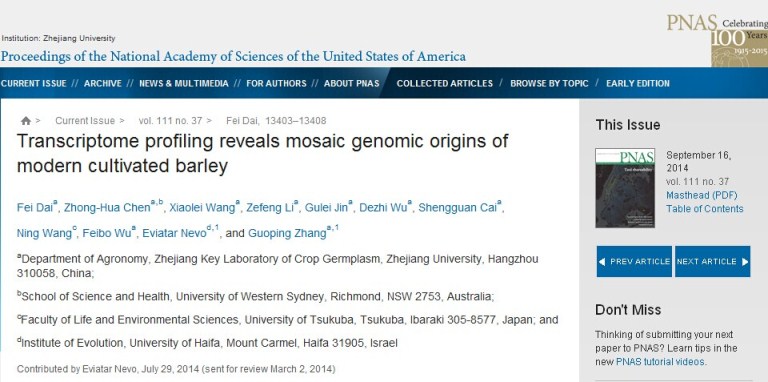Wild barley is the progenitor of cultivated barley, and harbors a myriad of mutations favorable for its adaptation to harsh environments. Understanding the domestication processes of cultivated barley should be helpful for exploiting elite genetic resources from the wild barley and breaking the bottleneck in modern barley breeding due to narrower genetic diversity.
Based on the previous results showing dramatically genetic difference between wild barleys from the Near East and from Tibet (Dai et al, 2012. PNAS, 109(42):16969-16973), Dr. Dai et al used RNA-Seq to determine the genomic origin of cultivated barley through analyzing some representative wild barley accessions from both the Near East and Tibet, and cultivated genotypes representing different areas of the world. This is the first attempt to employ RNA-Seq technique and genomic similarity analysis in studyingbarley domestication. Their results confirmed the polyphyletic origin of cultivated barley and foundthe genome of modern cultivated barley is derived from the wild barleys in the Fertile Crescent (mainly in chromosomes 1H, 2H and 3H) and in Tibet (mainly in chromosomes 4H, 5H, 6H and 7H).
The paper on above results, entitled “Transcriptome profiling reveals mosaic genomic origins of modern cultivated barley” has been recently published by Proceedings of the National Academy of Sciences, USA (Dai et al., 2014, www.pnas.org/cgi/doi/10.1073/pnas.1414335111). This study was supported bytheNatural Science Foundation of China (31330055, 31201166, 31301246 and 31171544).
